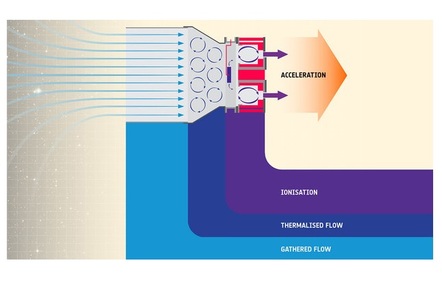
Breaking News
 $26M Frozen on Blockchain - With One Click
$26M Frozen on Blockchain - With One Click
 Italy are on national strike shutdown rejecting digital enslavement...
Italy are on national strike shutdown rejecting digital enslavement...
 The following U.S. states are currently using the rebranded "Reporty Homeland Security" so
The following U.S. states are currently using the rebranded "Reporty Homeland Security" so
 NATO Chief Urges Europe To Prepare For Long-Term World War With Russia, China, Iran & North Korea
NATO Chief Urges Europe To Prepare For Long-Term World War With Russia, China, Iran & North Korea
Top Tech News
 HUGE 32kWh LiFePO4 DIY Battery w/ 628Ah Cells! 90 Minute Build
HUGE 32kWh LiFePO4 DIY Battery w/ 628Ah Cells! 90 Minute Build
 What Has Bitcoin Become 17 Years After Satoshi Nakamoto Published The Whitepaper?
What Has Bitcoin Become 17 Years After Satoshi Nakamoto Published The Whitepaper?
 Japan just injected artificial blood into a human. No blood type needed. No refrigeration.
Japan just injected artificial blood into a human. No blood type needed. No refrigeration.
 The 6 Best LLM Tools To Run Models Locally
The 6 Best LLM Tools To Run Models Locally
 Testing My First Sodium-Ion Solar Battery
Testing My First Sodium-Ion Solar Battery
 A man once paralyzed from the waist down now stands on his own, not with machines or wires,...
A man once paralyzed from the waist down now stands on his own, not with machines or wires,...
 Review: Thumb-sized thermal camera turns your phone into a smart tool
Review: Thumb-sized thermal camera turns your phone into a smart tool
 Army To Bring Nuclear Microreactors To Its Bases By 2028
Army To Bring Nuclear Microreactors To Its Bases By 2028
 Nissan Says It's On Track For Solid-State Batteries That Double EV Range By 2028
Nissan Says It's On Track For Solid-State Batteries That Double EV Range By 2028
ESA Is Building an Air Breathing Space Thruster For Satellites

Perhaps outer space's most defining characteristic is the lack of air. The vacuum of space, largely devoid of molecules, makes the European Space Agency's new efforts to build an air-breathing thruster a significant challenge. The space agency recently hit a milestone developing a the new propulsion technology, however, building and testing a thruster in space-like conditions on the ground.
The ESA has been studying air-breathing electric thrusters (ABET) for over a decade. In 2007, a study concluded that the technology "could provide a promising innovative solution" for low Earth orbit (LEO) travel. In this low orbit around the planet, the upper atmosphere is actually thick enough to drag on spacecraft, requiring fuel thrusters to periodically lift satellites to keep them in orbit. An air-breathing thruster could collect these molecules and accelerate them out the back to achieve propulsion, allowing satellites to orbit for longer.

 Carbon based computers that run on iron
Carbon based computers that run on iron

